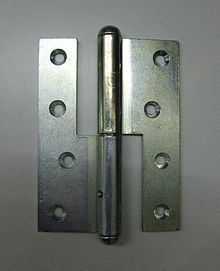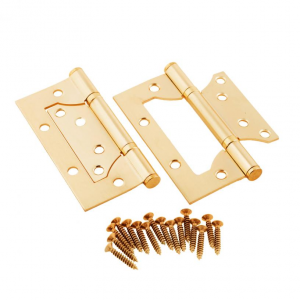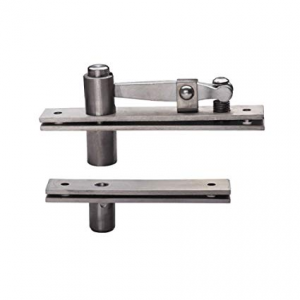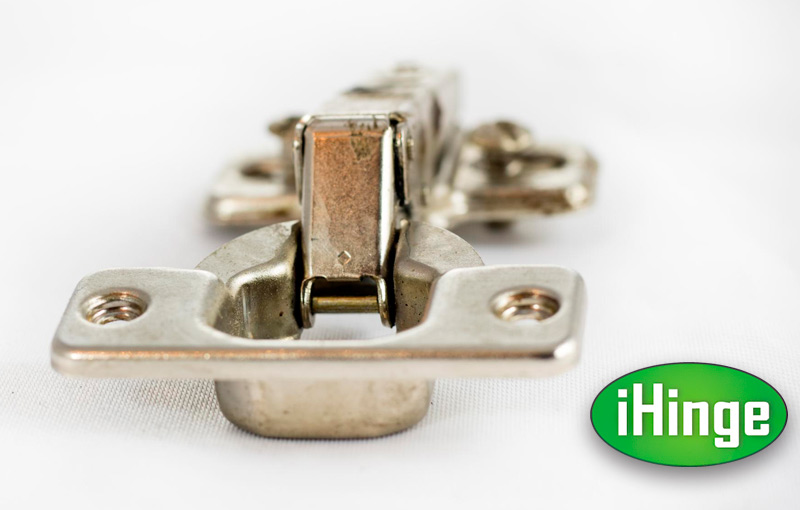- Have any questions?
- 800.997.8189
- Robbie@ihinge.com
What Are the Different Types of Hinges for Windows and Doors?

It may surprise you to learn that hinges aren’t one size fits all — they come in various shapes and sizes.
A hinge is an external joint that holds two items together while allowing for movement in a limited capacity. Interior design pieces that utilize hinges typically rotate relative to one another along a fixed axis. Most hinges, however, allow for rotation on only a single plane on a central axis.
Determining which type of hinge you need to install a door, window, exterior shutter, gate or other contraption depends on what the use is and where/how the hinge needs to be fitted.
Here’s a list of the eight most popular types of hinges used today and their common uses:

1. Butt hinge
These are very common hinges. They’re commonly used for everything from cabinets to doors, windows and many different kinds of furniture. Also known as “mortise” hinges, butt hinges that are used indoors are typically made of steel, while those used outdoors are typically brass or stainless steel to reduce corrosion.

2. Barrel hinge
A barrel hinge gets it name because it resembles a barrel. These hinges are commonly used for gates and where there the load will be relatively light on its radius.

3. Piano hinge
Not surprisingly, piano hinges most commonly allow the lids of pianos to open. They’re also called “continuous” hinges because they typically run the length of the flat edge of a piano. Other common applications include shower doors, toolboxes and folding wall partitions.

4. Butterfly hinge
These hinges look just like their name suggests—the sides spread out like a butterfly around a center pin. This means that the hinges can be very decorative. Butterfly and other case hinges are often visible, like on boxes, briefcases or cabinets. Additionally, butterfly hinges are available in various finishes, colors and materials.

5. Flush hinge
These hinges resemble butt hinges; however, they feature a leaf that fits inside its partner. Flush hinges are useful when you don’t want to leave a gap between a door and its frame. One downfall of flush hinges is they are often less durable than butt hinges and work best on lightweight cabinets, doors and cupboards.

6. Pivot hinge
Pivot hinges are perfect for when you don’t want to see a hinge, like on an overlay door. How these hinges work is one side mounts to the top of a door while the other mounts to the bottom. You can get both lightweight and heavy-duty pivot hinges. Another unique advantage of pivot hinges is they allow doors to swing both directions.

7. Spring hinge
Spring hinges are often used for door closings. Typically, two hinges are required to ensure a secure closing. As the name suggests, spring hinges use a spring to allow a door to close on its own after being opened.
8. Gate hinge
As the name suggests, gate hinges are ideal for gates and can be either for heavy or light-weight use. Gate hinges (also known as “strap” hinges) are often available in various materials, including brass, bronze, stainless steel and other materials. Additionally, gate hinges are available in both L-shaped and self-closing varieties.
Other types of hinges
Other, less common types of hinges include:
- Bi-fold hinges
- Concealed, or invisible hinges
- Flag hinges
- Heavy-duty hinges
- Hospital hinges
- Institutional hinges
- Knife hinges
- Latch hinges
- Off-set hinges
- Overlay hinges
- Panel box hinges
- Slip joint, or take apart hinges
- Stop hinges
- T hinges
- Weld hinges
As you can see, hinges come in all sizes and shapes. Feel free to contact us if you want any more information regarding deciding what type of hinge you need.

